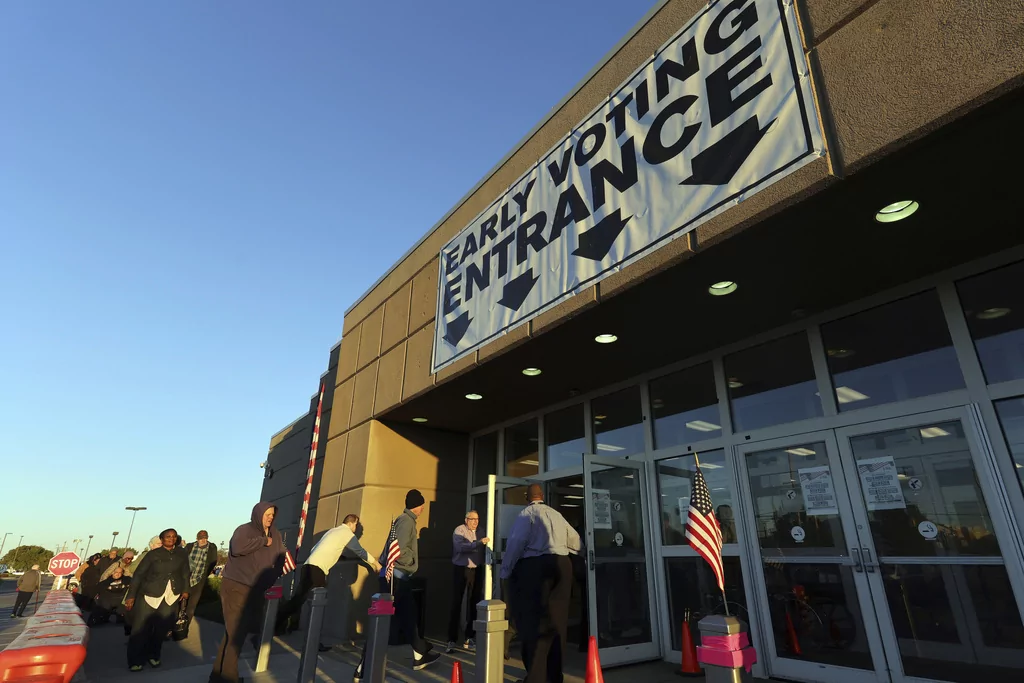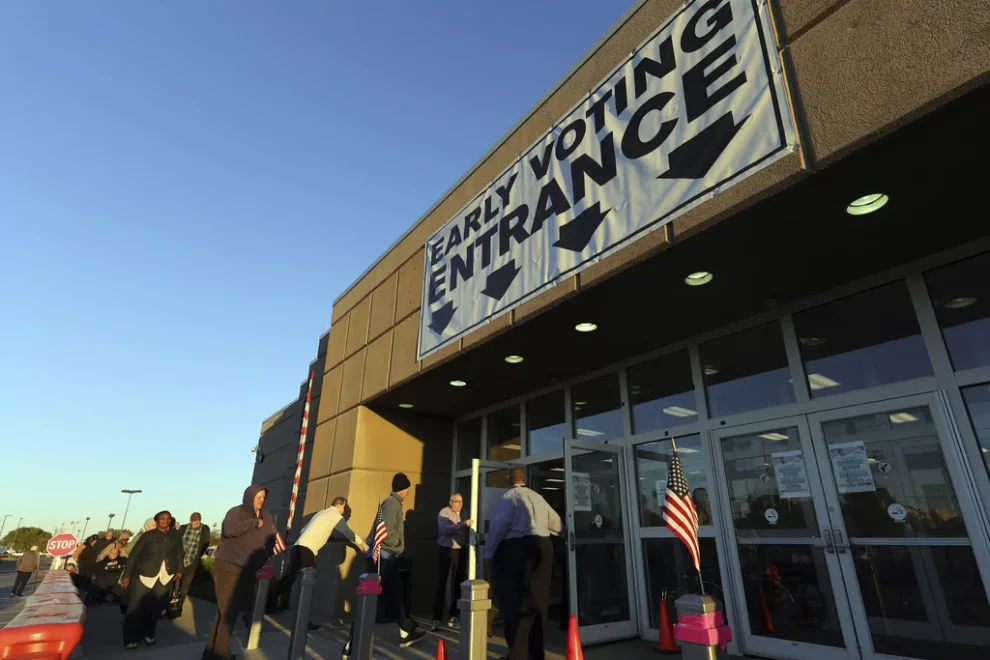Ohio has flipped back and forth between parties every two elections since 1984. Following this pattern, the Buckeye state switched to blue in 2008 and 2012 but flipped red in 2016 and 2020, when former President Donald Trump took the state’s 18 electoral votes from President Joe Biden by 8 points.

The state is in the middle of a tight senate race between incumbent Sen. Sherrod Brown (D), who has held the seat since 2007, and Republican Bernie Moreno. Moreno is an immigrant from Bogota, Colombia, a businessman, and a newcomer to politics. He has priorities such as securing the U.S. border, empowering parents to make education choices, and ending wokeness and cancel culture. Brown’s campaign has listed matters such as healthcare, seniors, and small businesses.
The Washington Examiner is following the key issues people care about as they prepare to vote in the election. The specific concerns being tracked are Social Security, crime, abortion, the economy, and immigration.
2024 ELECTIONS LIVE UPDATES: LATEST NEWS ON THE TRUMP-HARRIS PRESIDENTIAL RACE
The issues were chosen with the help of the Associated Press issues tracker. The Washington Examiner subsequently compared five of the key issues in Google Trends on a state-by-state basis, revealing which issues are most important to voters in swing-state contests.
Here, you can track the importance of these various concerns to Ohio voters over a rolling 30-day period.
Social Security
Social Security was ranked as the No. 1 concern for Ohio voters. There are two laws that prevent nearly 300,000 Ohioans from getting their full Social Security benefits: 1983’s Windfall Elimination Provision and 1977’s Government Pension Offset. The Windfall Elimination Provision reduces the Social Security benefits of workers who receive pensions from a federal, state, or local government for employment not covered by Social Security. The Government Pension Offset reduces Social Security spousal benefits for widows, spouses, and widowers whose spouses receive pensions from a federal, state, or local government.
In response to these laws, the Social Security Fairness Act, introduced and sponsored by Brown, was created to eliminate both laws and allow workers to receive their full Social Security benefits, even if they receive other benefits, such as government pensions.
In the midst of a competitive Senate race, Brown hosted a field hearing on restoring Social Security for Ohio law enforcement, firefighters, and public servants. The July hearing presented testimonies from workers who had their benefits cut and placed great emphasis on the need to pass the Social Security Fairness Act.
Crime
Crime was the second concern for voters in Ohio. The state’s crime rate has consistently been under the national average, and despite an overall decline in violent crime reports over the last decade, rates still rose from 2020 to 2023. In 2020, the total number of reported crimes was 27,105, but over 30,000 violent crimes were reported in Ohio last year, ranking the state 34th in the nation for homicides.
According to a report by the Columbus Dispatch, 7 in 10 crimes go unsolved by Ohio police. In 2022, the Cleveland and Akron police departments had an unsolved rate of 87%, with the Columbus Police Department right behind at 85%. In 2022, 65% of Ohio’s 21,857 aggravated assaults and 86% of the 5,692 rapes went unsolved by police.
One particular problem the Buckeye State has faced is domestic violence. Domestic violence has been on the uptick since 2014, with 18,742 incidents growing to 32,406 incidents in 2023. Those incidents led to charges, but that same year, there were an additional 36,111 incidents that resulted in no charges. In Ohio, 38% of women and 33% of men will experience domestic violence in their lifetime, ranking the state 19th in the nation for domestic violence rates.
Abortion
Abortion was the third-ranked issue for Ohioans, but Ohio is one of the few states to take a stand at the polls and reverse the state’s near-total abortion restrictions. In 2019, the Ohio state legislature passed the “heartbeat ban,” which bans all abortions after six weeks. Although the bill was blocked by a federal judge at the time, the day after the Supreme Court reversed Roe v. Wade in 2022, Ohio put the heartbeat ban in place.
The ACLU and Planned Parenthood sued to overturn the law, and a judge issued an injunction, holding off the ban until it could be decided by Ohio’s Supreme Court. Before the case was ever seen by the court, reproductive rights advocates came together to form the Ohioans United for Reproductive Rights and set their sights on enshrining the right to an abortion in their state Constitution. To get the amendment on the ballot, 413,000 signatures were needed, and over 700,000 were collected.
Issue 1, which enshrines an “individual right to one’s own reproductive medical treatment,” was passed on Nov. 7, 2023, and sent shockwaves through the red state. Ohio joined blue states Vermont, California, and Michigan in protecting abortion rights.
As abortion is on the ballot, it’s become a centric point for the senate race, particularly because of a comment by Moreno.
“Sadly, by the way, there’s a lot of suburban women, a lot of suburban women that are like, ‘Listen, abortion is it,’” Moreno said at a town hall in Warren County on Sept. 20. “‘If I can’t have an abortion in this country whenever I want, I will vote for anybody else.’ OK. It’s a little crazy, by the way, but — especially for women who are like past 50, I’m thinking to myself, ‘I don’t think that’s an issue for you.’”
Brown had already placed reproductive rights at the heart of his campaign following the voter’s momentum in 2023, but he jumped on the comment, capitalizing on its polarity toward women.
Economy
The Economy was the fourth concern in Ohio, and its unemployment rates closely follow the national average of 3.7%, coming in at 3.6% in November 2023. According to the bureaus of Labor Statistics and Economic Analysis, Ohio produced $864.1 billion in goods and services last year, growing 4.6% from last year.
Ohio’s educational services industry fell by 2.6%, but manufacturing grew by 6.6%, and mining, oil, and gas extraction grew by 13%. The retail trade industry saw the largest increase of 25%. The industries that made up most of the state’s economy were manufacturing and real estate, equating to $126.5 billion and $100.7 billion each.
The Buckeye State makes up 3.1% of the nation’s economy, ranking 7th in economic contribution. However, in 2018, the state was 3.26% of the economy, proving a drop in economic participation.
Immigration
Immigration ranked last when compared to other search trends. The state was recently a hot spot for the issue, with Trump and his running mate making unproven claims about Haitian immigrants eating cats and dogs in Springfield.
According to the American Immigration Council, 4.9% of Ohio’s population is immigrants, and they make up 6.1% of the state’s workforce. The top countries of origin for immigrants in Ohio are India, Mexico, China, the Philippines, and Canada. Many immigrants in Ohio’s workforce have less than a high school degree, but immigrants are also more likely than U.S. citizens to obtain bachelor’s degrees and graduate degrees.
CLICK HERE TO READ MORE FROM THE WASHINGTON EXAMINER
Immigrants make up 26.9% of physicians in the state, 26% of software developers, and 11.7% of STEM workers. They also make up 8% of Ohio’s entrepreneurs and saw $944 million in total business income in 2022. Immigrants had $18.6 billion in spending power and contributed $7 billion in taxes.
Over half of Ohio’s immigrant population is naturalized, and 82,800 are eligible for naturalization. There are 103,900 immigrants as well as 9,600 entrepreneurs who are undocumented, amounting to 17.9% of the state’s total immigrant population.
























